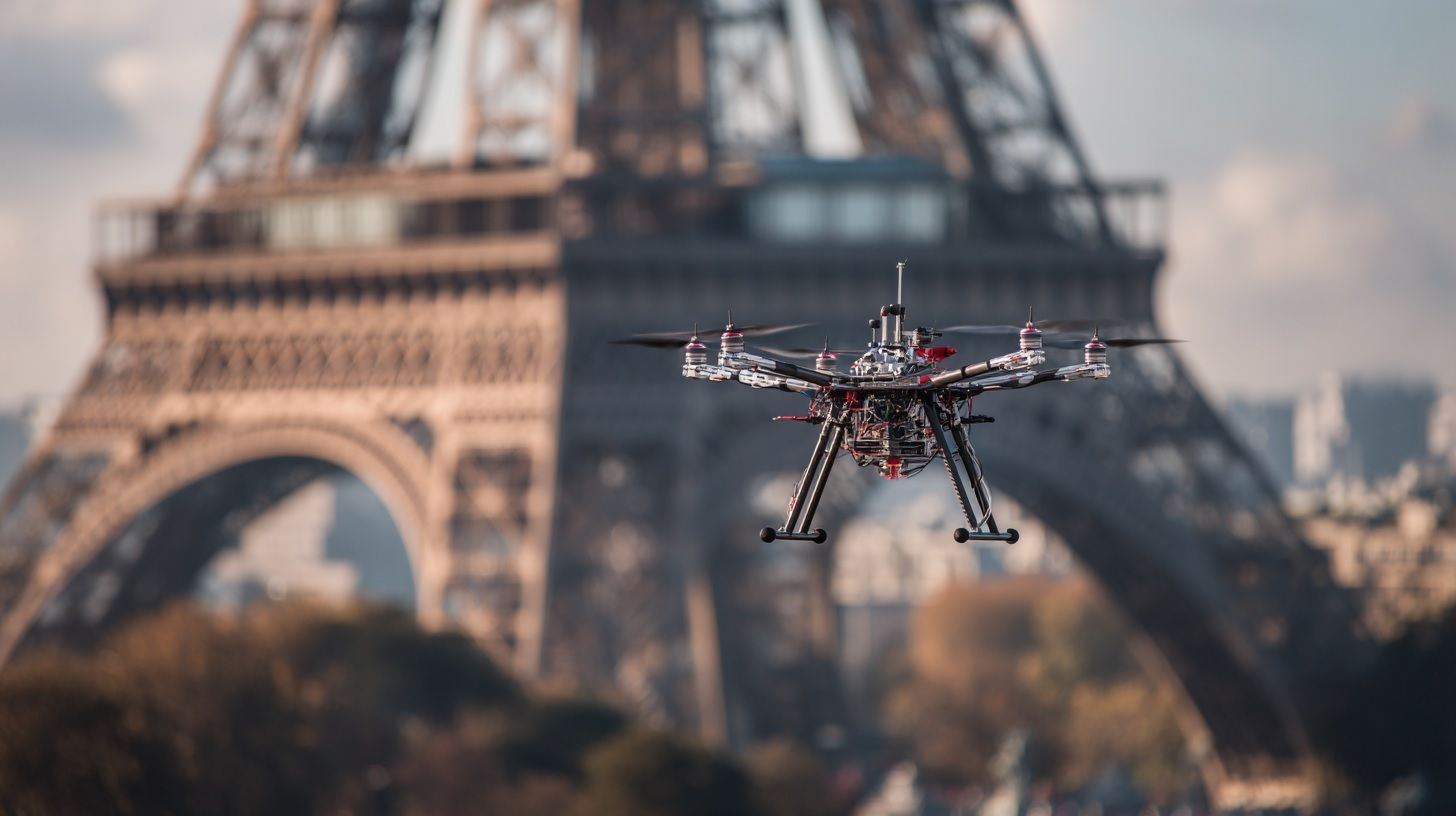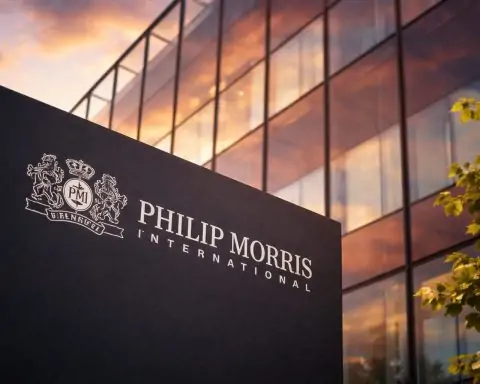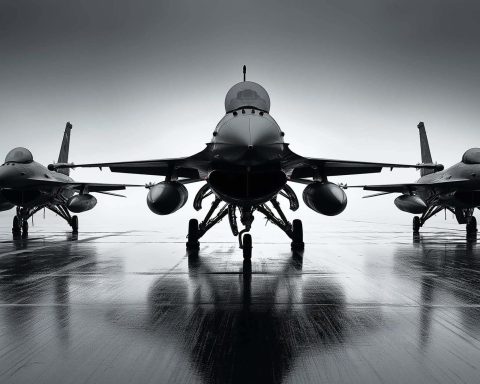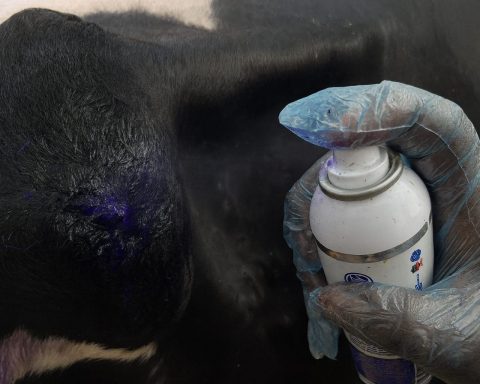- France follows the EU drone framework, classifying drones by weight into Classes C0–C4 and dividing operations into Open, Specific, and Certified categories.
- In the Open category there are A1, A2, and A3 subcategories with distance rules: A1 over people for very small drones; A2 at least 30 meters from uninvolved people (5 meters with low-speed and an A2 certificate); and A3 at least 150 meters from residential areas or 50 meters from people in remote areas.
- Drones over 250 grams or any drone with a camera must be registered on AlphaTango, receive an UAS Operator ID, and display it on the drone for a registration period of five years.
- The Basic Pilot Certificate for A1/A3 is a 40-question online exam with a 75% passing score, and minimum age is 14; the A2 certificate adds a separate theory exam (CATT) costing about €30.
- Commercial operators must obtain DGAC authorization for non-Open flights via AlphaTango, perform a risk assessment using SORA or STS, and carry mandatory third-party liability insurance.
- Night flying is generally prohibited without explicit authorization, and if allowed, the drone must be equipped with required lighting such as a flashing green light.
- BVLOS operations are not allowed for hobbyists and require Specific Category authorization with robust safety measures and a SORA-based risk assessment.
- No-fly zones are shown on the Géoportail map, with red zones forbidden, orange zones allowing limited flights (often under 50 m), and airports/high-security sites off-limits without permission.
- Insurance rules differ by use: recreational users typically are not legally required to insure drones under 20 kg, but commercial operators must have third-party liability insurance; drones over 800 g may require electronic identification and geo-fencing.
- Penalties for violations include fines up to €15,000 for unauthorized airspace, up to €75,000 for BVLOS or serious offenses, up to six months in prison, and privacy breaches can bring €45,000 fines and up to one year in prison.
France’s drone regulations have evolved significantly in recent years, especially with the adoption of unified European Union (EU) rules. As of 2025, flying a drone—whether for fun or for business—means navigating a comprehensive legal framework designed to ensure safety, privacy, and airspace security [1] [2]. This guide breaks down everything you need to know about drone laws in France in 2025, including new classifications, pilot requirements, operational limits, no-fly zones, insurance, special flight permissions, commercial operator rules, enforcement measures, and recent updates. Read on to stay fully compliant and avoid hefty fines (or worse).
Legal Classification: Drone Classes & Flight Categories
France follows the EU’s drone regulation system, which classifies drones by weight/technical specs and by operation risk category. Understanding these classifications is the first step to knowing what rules apply to your drone:
- Drone Classes (C0–C4): All new drones are assigned a class from C0 to C4 based on weight and features. Each class comes with specific technical requirements and allowable use cases [3]. For example, C0 covers the smallest drones (<250g, typically without a camera), C1 covers drones <900g (with certain safety features like noise limits and data protections), C2 covers drones <4kg (often with speed limitation mode), and C3/C4 cover larger drones up to 25kg with additional restrictions [4]. Starting in January 2024, any drone flown in the “open” category must bear a CE class identification label (C0–C4) confirming it meets EU standards [5]. (Drones placed on the market before 2024 without a class mark can still be used but only under transitional conditions.)
- Operational Categories: In addition to the hardware classes, the EU defines three categories of drone operations based on risk: Open, Specific, and Certified [6] [7]. These determine what you’re allowed to do and what approvals or certifications you need:
- Open Category (Low Risk): This is the least restrictive category for operations deemed low-risk, covering most recreational flying and simple professional uses with drones under 25 kg [8]. If you follow the Open category rules, you do not need prior authority authorization for each flight. The Open category is subdivided into A1, A2, A3 subcategories, which impose different limits based on how close you fly to people:
- A1 – “fly over people”: Allowed to fly over uninvolved people occasionally (never over large gatherings or crowds) [9]. Only very small or lightweight drones qualify for A1 (typically C0 or C1 class under 900g) [10].
- A2 – “fly close to people”: Allows operation near people with a minimum safe horizontal distance (e.g. 30 meters by default) [11]. Heavier drones (up to 2kg, class C2) can operate in A2 if the pilot has additional training (more on pilot certification below) and keeps the specified distance.
- A3 – “fly far from people”: For larger drones or riskier craft (up to 25kg) where you must keep well away from people and residential areas [12]. Essentially, A3 operations should be in sparsely populated or remote areas only, at least 150 meters away from any residential, commercial, or industrial zone.
- Specific Category (Medium Risk): Operations that fall outside the Open category (due to higher risk) land in the Specific category. These include flights near or over people in populated areas, beyond visual line of sight (BVLOS) missions, operations with heavier drones (>25kg), or other scenarios raising risk above “low” [13]. Specific category flights require an authorization from the French aviation authority (DGAC) before you fly [14]. Practically, this means you need to submit a risk assessment and an operational plan to DGAC (often via the AlphaTango portal) and get permission for that operation. France historically defined standard national scenarios (S1, S2, S3, S4) for common use-cases like BVLOS or urban flights – under EU rules these are being replaced by European standard scenarios (STS) and a Specific Operations Risk Assessment (SORA) process for any custom missions. In short, if your flight can’t be done in the Open category, you must jump through extra hoops (and hold higher pilot qualifications) to fly in the Specific category [15] [16].
- Certified Category (High Risk): This category is reserved for the highest-risk operations – essentially drone flights approaching the complexity/risk of manned aviation [17]. Examples include drones used to transport people or dangerous goods, or very heavy UAVs. Certified category operations require an airworthiness certification for the drone (like an aircraft), licensed pilots with an advanced remote pilot license equivalent to a manned aircraft license, and compliance with rigorous safety standards [18] [19]. Average drone users (and even most commercial drone businesses) will never operate in the Certified category – it’s more for things like large drone delivery systems or passenger drone services in the future.
- Open Category (Low Risk): This is the least restrictive category for operations deemed low-risk, covering most recreational flying and simple professional uses with drones under 25 kg [8]. If you follow the Open category rules, you do not need prior authority authorization for each flight. The Open category is subdivided into A1, A2, A3 subcategories, which impose different limits based on how close you fly to people:
Drone Registration & Pilot Licensing
Drone Registration (AlphaTango): France requires registration of many drones with the DGAC via its online portal AlphaTango. In fact, all drones over 250 grams must be registered on AlphaTango, and any drone with a camera (even if lighter) also requires registration [20]. This threshold aligns with EU rules – 250g is the general cutoff for mandatory operator registration across Europe. (The older French rule was ≥800g, but EU law broadened it to 250g or any camera-equipped drone for privacy reasons.) Upon registering, you’ll receive a registration number (an “UAS Operator ID”) that must be affixed to your drone in a visible, legible manner [21]. Registration is free and valid for up to 5 years [22] [23]. You should carry proof of the registration certificate (digital or print) when flying in case of inspection [24]. Failure to register an applicable drone can result in fines (approximately €450 for drones >250g, or higher for large drones) [25].
Pilot Competency & Certification: In France, drone pilots need to demonstrate their knowledge of the rules. The level of training/certification required depends on your drone and the type of flights:
- Basic Pilot Certificate (A1/A3): If you fly drones weighing ≥250g (or any drone with a camera), even just for fun, you are required to complete an online training and pass a test to obtain the EU “Proof of Competence” for subcategories A1/A3. France offers this training free via the DGAC’s Fox AlphaTango e-learning portal [26] [27]. It’s essentially a 40-question multiple-choice exam covering safety, airspace rules, weather, privacy, etc., with a 75% passing score [28]. Once you pass, you get a basic competency certificate (often referred to as the brevet in France) that you should print or save and carry when flying [29]. Minors can also get certified (minimum age 14 for the A1/A3 certificate in France), though a parent/guardian must register the drone for them [30].
- Additional Certificate (A2): If you want to fly in subcategory A2 (close to people, with a larger drone up to 2 kg), you must go beyond the basic test. A specialized A2 theory exam is required, which can be taken online or at a testing center and covers more in-depth topics like meteorology and risk mitigation [31]. In France this exam is called the CATT (Certificat d’Aptitude Théorique de Télépilote) for national scenarios, or specifically an A2 certificate for the EU Open category [32]. There is a small fee (~€30) for the A2 exam in France [33]. In addition, you’re expected to declare that you’ve done practical self-training (e.g. 5 flights in A3 conditions) with your drone before using A2 privileges. With the A2 certificate, you are allowed to fly closer to uninvolved people (down to 30m, or even 5m if your drone has a low-speed mode) in accordance with A2 subcategory rules.
- Professional Training: For commercial operators or those flying in the Specific category, the requirements are higher. Commercial drone pilots in France must pass at least the same theory exams above and usually undergo practical training as well [34] [35]. France historically required a certified theoretical exam (similar to a private pilot ground school exam) for professional drone pilots, and practical training for each scenario (S1–S4) with a training organization [36] [37]. Under the EU framework, much of this is transitioning to the A2/CATT exams plus whatever additional training the operator deems necessary for their operations. Essentially, if you’re doing higher-risk flights (e.g. flying in urban areas, at night, etc.), you should obtain a remote pilot license appropriate for that operation. France’s CATT (and the newer European LUC – Light UAS Operator Certificate for organizations) are part of this framework [38] [39]. In summary, recreational fliers with <250g drones have no formal training required, but anyone flying heavier drones or for non-leisure purposes will need to invest in passing the required exams. Always carry proof of your certificates when flying, as authorities may ask for them during spot checks [40].
Operational Rules: Altitude, VLOS, and Distance Limits
When and where you fly your drone is tightly regulated. Breaking these basic flight rules can lead to severe penalties, so keep these in mind every time you take off:
- Maximum Altitude: In France (as in all EU countries), drones in the Open category must not be flown above 120 meters (400 ft) from the ground [41]. This altitude limit ensures drones stay well below manned aircraft in most areas. Exception: If you are flying near a tall structure (e.g., inspecting a 200m tower), you may exceed 120m relative to the ground only within 15m above the object and with the owner’s permission, but never above 120m from your takeoff point without specific clearance. (Older French rules allowed 150m in some cases, but the EU limit of 120m now applies generally [42].) Always double-check local restrictions, as certain zones impose lower altitude caps (some “orange” zones on the map allow flying only up to 50m, for instance) [43].
- Visual Line of Sight (VLOS): You must keep your drone within your visual line of sight at all times during flight [44]. This means you (the pilot) should always be able to see the drone with your own eyes (not just through the camera feed) and orient it. You cannot rely solely on FPV goggles or a live video screen. If you want to fly beyond your own eyesight, you must have an observer helping you, or operate under a Specific category authorization for BVLOS. But for hobbyists and most cases, no flying beyond line of sight is allowed [45]. Flying out of sight without permission is taken very seriously – it can incur penalties up to 6 months in prison and €15,000–€75,000 in fines in France [46], because a drone out of sight can wander into dangerous airspace.
- Distance from People (“uninvolved persons”): Drones cannot fly over or too close to people who are not part of your operation, unless you meet strict conditions. In general, overflight of people is prohibited for drones heavier than 250g [47]. In the Open category:
- Subcategory A1 drones (under 250g, or certain C1 drones) may fly over people sporadically but never over crowds or gatherings [48] [49]. You should always avoid directly overflying even single individuals if possible.
- A2 operations require keeping at least 30m distance from uninvolved people (or 5m if the drone has a low-speed mode and you’ve got the A2 cert) [50]. If you cannot ensure that buffer, you must not fly.
- A3 operations must be in areas completely clear of uninvolved people; essentially nobody should be within at least 50m (some references say 30m, but EU law sets 50m horizontal minimum) of your flight path, and at least 150m away from any residential, commercial, or industrial area [51].
- Flying over assemblies of people (crowds) is strictly forbidden unless you have a specific high-risk authorization (practically, only done in professional setups like approved drone light shows). A crowd = any dense gathering where individuals can’t quickly move away, e.g. concerts, sports events – stay away.
- Distance from Buildings/Property: You should not fly over private property or close to buildings without permission. French guidance says do not fly over private property (gardens, houses) unless you have the owner’s consent [52]. Respecting privacy is crucial (France has strong privacy laws – filming someone in their home or enclosed property without consent can lead to criminal charges [53]). Keep a reasonable distance from structures and vehicles not involved in your flight. If you lose signal or control, you don’t want your drone crashing into someone’s roof or a road.
- Privacy and Image Capture: French law explicitly prohibits using drones to film or photograph people without their consent in a way that violates privacy. You cannot publish or stream imagery of individuals on private premises without permission [54]. Doing so can lead to one year in prison and €45,000 fine under privacy violations [55]. Even for recreational flights, avoid flying low over neighbors’ yards or taking videos of people inadvertently. Always follow GDPR and local privacy rules if you will use drone footage publicly.
No-Fly Zones and Airspace Restrictions
France has a patchwork of restricted airspaces where drones cannot be flown (or have special restrictions). It’s absolutely essential to check these before each flight, because unauthorized incursions can result in severe penalties [56]. Key points about restricted zones:
- Sensitive Areas: Drones are forbidden from flying over certain high-security or sensitive sites under any circumstances. This includes nuclear power plants, military bases, prisons, government facilities, historical monuments, and national parks and nature reserves [57]. Also, obviously, never fly near airports or airfields without explicit permission – controlled airspace around airports (often a 5 km radius or more) is off-limits to drones. These areas are marked in red on official maps.
- Interactive Maps (Géoportail): The French government provides an official online map for drone pilots on the Géoportail website, which highlights all the no-fly zones, altitude limits, and other airspace restrictions across France [58]. Before you take off anywhere, check this map! You can find it by searching for “Carte des zones de vol drones Géoportail” – it’s an interactive map with colored overlays. Red zones are no-fly (or extremely restricted) areas, orange zones may allow limited altitude (e.g. max 50m) or require special conditions, and other colors indicate various controlled spaces. An example snapshot of the map is shown below, where red areas are forbidden (except possibly on private property under strict conditions), and orange areas allow flights but typically below 50m altitude [59] [60]:
- Urban Areas: By default, flying a drone in built-up urban areas (cities, towns) is not allowed under the Open category (especially for drones >250g). This is because urban environments are full of people and sensitive buildings. Recreational pilots are advised not to fly over towns or populous areas at all [61]. If you want to film in a city or densely populated area, this falls under the Specific category and you’ll need to obtain a prefectural or DGAC authorization (for example, under the old rules an S3 scenario required notifying and getting permission from the prefect) [62]. Some cities also have local bylaws against drone flights. Always check local regulations – for instance, Paris is almost entirely a no-fly zone for drones (aside from a few designated model airfields on the outskirts).
- How to Get Authorization: If you have a legitimate need to fly in a restricted area (e.g., a professional filming at a historical site, or an emergency/security operation), you must seek prior authorization. Depending on the case, this could be through the DGAC/DSAC via the AlphaTango system, or through the local préfecture for certain public safety operations [63] [64]. You will need to provide details of your flight (date, time, location, altitude) and often proof of your certifications and insurance. Only with written permission (or NOTAM published by SIA) can you proceed to fly in those areas. Unauthorized flight in a no-fly zone can lead to criminal penalties (in France, up to 6 months jail and €15,000 fine) [65] – so never skip this step if your flight area is restricted.
- Temporary Restrictions: Note that France (like other countries) sometimes issues temporary no-fly zones (for events, VIP visits, wildfires, etc.). These will be published via NOTAMs or on the Géoportail map as well. For example, flying near an active firefighting scene or accident is illegal, as drones can hinder emergency helicopters [66].
Practical Tip: Use official tools like the Géoportail drone map or smartphone apps (e.g., some apps integrate these maps) to verify airspace status. The AlphaTango site and app also link to these maps. When in doubt, don’t fly. It’s better to relocate or delay your flight than to risk an incursion into restricted airspace.
Insurance Obligations
Liability insurance is a crucial consideration for drone pilots. In France, insurance requirements depend on whether you’re flying recreationally or commercially, but in all cases you are legally responsible for any damage or injury your drone might cause.
- Recreational Use: Hobbyist drone pilots are not legally required to carry insurance for small drones in the Open category (except for very heavy drones >20kg, where EU law mandates insurance) [67]. However, it is highly recommended. Many standard homeowner insurance policies (responsabilité civile in French) automatically cover personal liability for hobby drone use up to a certain weight (often up to 800g) [68]. If you have a drone heavier than that, you should check with your insurer – you might need to add a rider or separate coverage. Given the potential damage a drone can cause (imagine crashing into a car or injuring someone), having insurance is just smart. Also, if you join a model aeroclub or the French Fédération d’Aéromodélisme (FFAM), membership usually includes liability insurance coverage [69].
- Commercial Use: For drone business operators, insurance is mandatory. French regulations require all commercial drone operators to have appropriate third-party liability insurance for their operations [70] [71]. This protects you and the public in case your drone causes property damage or bodily injury during a paid job. Clients may ask for proof of insurance before you fly. The coverage amount should be proportionate to the risk – typically policies cover at least several million euros of liability (similar to aviation insurance for light aircraft). If transporting goods, additional insurance might be needed for cargo. Failing to insure a commercial flight could not only violate the law [72] but would leave you personally on the hook for damages – a risk no professional should take. Always carry your insurance certificate when on a job, and note that some EU countries might ask foreign operators for proof of insurance too.
In summary, while hobbyists are not forced by law to insure drones under 20 kg, it’s strongly advised to do so, and practically all professionals must be insured [73]. The peace of mind is worth it, and it’s part of being a responsible drone pilot.
Special Rules: Night Flying, BVLOS, and Urban Operations
Some drone activities are inherently riskier and are restricted or require special permissions in France:
- Night Flying: Flying at night (after civil twilight) is generally prohibited for recreational and standard operations [74]. EU regulations allow night flights in Open category if certain conditions are met (e.g. the drone has lights and the pilot’s training covered night operations), but France’s national rules add stricter conditions. In practice, you cannot fly a drone at night in France without explicit authorization from authorities [75] [76]. Certain professional use-cases (like light shows or emergency operations) might obtain waivers. If authorized, the drone must be equipped with appropriate lighting (a flashing green light is required by EU rules for night) and you must follow any additional safety protocols. Unless you have a permit, plan to fly only during daytime. If you’re caught flying at night illegally, expect heavy penalties.
- BVLOS (Beyond Visual Line of Sight): As mentioned, all routine drone flights must be within visual line of sight. True BVLOS flights (where the drone goes further than you or an observer can see) require a Specific category operation with robust safety measures. BVLOS operations are typically reserved for advanced professional missions (infrastructure inspections, agricultural surveying over large fields, etc.) and require DGAC authorization per mission or a specific long-term approval. Under the old national framework, Scenario S2 allowed BVLOS up to 1 km in rural areas with a drone <2kg [77], but under EU rules, BVLOS now would be handled via a Specific category authorization (potentially using a predefined risk assessment like SORA). To fly BVLOS, an operator must demonstrate reliability (often with a fail-safe return-to-home, real-time tracking, etc.) and the pilot must have advanced theoretical knowledge (CATT/CATS certificate) [78]. Do not attempt BVLOS flight as a hobbyist – it’s illegal and dangerous. Losing sight of your drone can lead to loss of control and incursions into manned aircraft airspace, which is why flying beyond sight without approval is punishable by up to 6 months imprisonment in France [79].
- Urban & “Crowded” Operations: Flying in urban or populated environments is one of the most tightly controlled aspects of drone law. For recreational pilots, flying over cities or crowds is off-limits. For commercial operators, many jobs (news filming, real estate shots, events) happen in towns – but to do this legally, you must follow specific procedures. Typically, a professional will operate under a Specific category authorization (or a standard scenario like the European STS-01 for VLOS over a controlled ground area in populated environment). This entails conducting a risk assessment, often informing local authorities (police/prefecture), and ensuring mitigations like establishing a perimeter or having an observer. In France, prefectoral authorization is needed to fly in populated areas under scenarios like the old S3 (VLOS in urban areas) [80]. Practically, you would request permission days or weeks in advance, justifying your flight. If granted, you might have to coordinate with local law enforcement on the day. Never fly over open-air assemblies of people (concerts, rallies) without a high-level clearance – this is extremely restricted. Even flying down a city street, you need to ensure no uninvolved people are under your drone’s path. France has enforced rules against drones over cities especially after incidents in past years. So, if you are not an authorized professional, it’s safest to avoid urban flying altogether. If you are authorized, stick strictly to your approved plan (altitude, zone, time) and carry your paperwork in case of police inquiries.
Requirements for Commercial Operators and Businesses
If you plan to use drones for commercial purposes in France (any form of compensated work or business activity), you must adhere to additional requirements beyond the basic rules:
- Obtain the Necessary Pilot Credentials: As discussed under pilot licensing, a commercial drone pilot in France must hold the proper certificates. At minimum, this means the EU A1/A3 certificate, and likely the A2 certificate or French theoretical drone license (CATT) if flying heavier drones or near people [81]. You should also have practical training. France’s DGAC may require proof of a theoretical exam pass (“attestation de suivi de formation”) and a practical training attestation for scenarios you will fly [82]. Make sure to keep these documents updated (the new EU certificates are typically valid for 5 years before renewal).
- Register as an Operator: In addition to registering the drones, commercial operators (UAS operators) should register themselves on AlphaTango and specify that they are conducting professional operations. The system will issue an Operator registration number (which is the one you affix on all your drones). Even foreign operators from outside the EU must do an EU operator registration (in some EU country) before operating in France [83].
- Operational Authorization: For any flight that doesn’t fit the Open category, you must apply for an operational authorization from DGAC. This involves submitting a dossier via AlphaTango with your risk assessment, procedures, and mitigation strategies for the mission. France has aligned with EASA’s SORA (Specific Operations Risk Assessment) methodology for unique operations and offers predefined scenarios (PDRAs) and Standard Scenarios (STS) to simplify authorization in common cases. For example, STS-01 is a standard for VLOS flights in populated areas under 120m with certain drone features; STS-02 is for BVLOS in sparsely populated areas. If your operation falls under one of these, you can declare compliance (and you’ll need the corresponding theoretical cert CATS) [84] [85]. If not, you’ll do a SORA. Important: commercial operators must also prepare an operations manual and maintain logs of their flights and pilot training [86] [87]. These may be requested by the DGAC or insurers.
- Insurance and Liability: As noted, carrying commercial drone insurance is mandatory [88]. Before starting business, secure a policy and understand its coverage and limits.
- Drone Maintenance and Compliance: Ensure your drone is compliant (CE class-marked if applicable) and properly maintained. Commercial drones > 800g in France must have a functioning electronic identification signal and geo-fencing capability [89] – basically a built-in or add-on device that broadcasts the drone’s ID and position to law enforcement. (France pioneered this requirement ahead of the EU; now EU Remote ID rules are coming into force as well.) Keep your drone firmware up to date and perform pre-flight checks. As a professional, you are expected to follow manufacturer’s maintenance guidelines and keep records of any tech issues.
- Privacy/Data Considerations: If your work involves capturing images or other data, be aware of privacy laws and obtain any necessary filming permissions. For instance, commercial filming in certain cities might require approval from the city administration in addition to aviation authorities.
- Business Registration: This is outside aviation law, but note that if you earn money from drone services in France, you should be properly registered as a business or independent worker (auto-entrepreneur, etc.) and follow tax/labor laws. The DGAC authorization is not a business license; it’s an aviation safety approval. Make sure you’re legally operating as a business entity as well.
Staying on the right side of the regulations not only avoids penalties but also adds credibility to your operations. Clients will know you are compliant and insured, which is often a requirement for contracts. The DGAC does conduct oversight – they may perform audits or spot-check commercial operators’ compliance, so don’t cut corners on safety procedures.
Enforcement and Penalties
France has strict penalties for drone law violations – ignorance is not a defense. Here’s what you could face if you break the rules:
- Flying Unregistered: If you operate a drone heavier than 250g without registering it first on AlphaTango, you risk a fine of up to €450 [90]. If the drone is over 800g and not registered, fines can go higher (around €750) [91] because larger drones pose greater risk.
- Flying Without Certification: If you fly too close to people or in situations that required a pilot certificate (e.g. A2) without having one, you can be fined about €450 as well [92]. For example, flying within 30m of people with a 2kg drone and no A2 license would violate the rules [93].
- Unauthorized Zone or Altitude: Flying in a prohibited area (red zone) or outside allowed areas (for instance, over a city or in restricted airspace) without permission can lead to 6 months in prison and a €15,000 fine [94]. Similarly, exceeding the altitude limit or breaching other airspace rules falls in this category of serious offense.
- BVLOS or Out-of-Sight Flight: As noted, going rogue and flying beyond line of sight without authorization can incur up to 6 months imprisonment and fines from €15,000 up to €75,000 in the most egregious cases [95]. The high upper limit reflects how dangerous authorities consider BVLOS operations without oversight (since it could interfere with other air traffic).
- Endangering People or Privacy Violations: If you fly over people (creating a risk of injury) or use a drone to spy on someone, penalties amplify. Violating privacy (e.g., filming someone in their home/backyard without consent) can lead to 1 year in prison and €45,000 fine [96] under French law. Dropping items from a drone or carrying hazardous materials without approval would also carry heavy punishments.
- Damage or Injury: Independent of specific drone laws, if your drone causes an accident, you can be liable under civil and criminal law. Serious negligence leading to injury could even result in inculpation for involuntary injury. Always remember you have personal liability as a pilot/operator.
Enforcement is getting increasingly sophisticated. Police and gendarmes are trained in drone regulations now and drone police units exist in France. The required electronic identification on larger drones allows authorities to remotely monitor compliant drones – and track down offenders using non-compliant ones. Reports indicate that authorities do not hesitate to confiscate drones used in illegal flights and issue fines. In 2023, for example, several tourists in Paris were fined for drone flights near landmarks. Bottom line: The era of leniency is over; France treats drone infractions seriously, so fly responsibly.
If you’re ever unsure about a rule, don’t risk it – seek clarification from DGAC or consult official sources.
Recent Changes and 2025 Updates
The regulatory landscape for drones is continually being refined. Here are some of the latest changes as of 2024/2025 and what to expect looking forward:
- EU Harmonization (2024): As of January 1, 2024, the transitional period for EU drone rules ended. This means older drones without class markings are now subject to tighter restrictions in the Open category. For instance, to fly in subcategory A2 going forward, your drone must have a Class C2 label – otherwise you can only operate it in A3 “far from people” settings. Many pilots who bought drones before 2023 have had to adjust to these limitations or get new class-marked models. Additionally, all drones in the Open category must meet certain tech requirements now, like having an identification and geo-awareness system [97]. Manufacturers are producing drones with built-in geo-fencing (to respect no-fly zones) and Remote ID transmitters. If you have an older drone (>800g) in France, you were already required by national law to add a remote electronic ID module – now such features are increasingly standard.
- Remote Identification: France was ahead in mandating electronic ID (since 2019, drones ≥800g had to broadcast an ID signal). EU-wide Remote ID requirements took effect in 2023-2024: new drone models with class labels C1–C3 include a built-in transmitter that broadcasts the drone’s position and operator’s info to receivers. By 2025, expect enforcement of Remote ID to ramp up. Practically, ensure any required firmware updates are applied so your drone’s “e-identification” is active. If you built a custom drone or still fly an older one, check DGAC guidance – you might need an add-on module to be legal [98].
- AlphaTango and Online Systems: The French DGAC’s AlphaTango platform continues to be improved. It’s the one-stop shop for registration, pilot training, and authorization filings. In 2025, more processes are being digitized. For example, professional operators can declare certain low-risk specific operations online without waiting long for paper approvals. Always use the latest forms/templates from DGAC for any applications.
- U-Space Implementation: The EU is rolling out “U-Space” airspace in parts of Europe starting in 2023-2025. U-Space is a framework for managing drone traffic with dedicated corridors or zones where drones can operate with automated traffic management. France is among the early adopters. This likely won’t affect hobbyists directly in 2025, but in certain areas designated as U-Space, drone operators (especially commercial) might be required to use an approved U-Space service provider (USSP) to coordinate flights. Keep an eye on DGAC announcements about any U-Space zones in France (for example, around some urban areas or drone delivery trial regions).
- Upcoming Regulatory Tweaks: The EU drone regulations will continue to evolve. EASA periodically refines rules – for instance, discussions about allowing certain autonomous flights, swarms, or updates to categories. France, on its part, may introduce additional national rules especially concerning privacy or specific local needs. In late 2024, France was reviewing its drone enforcement strategies and potentially increasing penalties for repeat offenders. There’s also ongoing work on integrating counter-drone systems to secure sensitive sites. While these don’t change the rules for you as a pilot, they mean that if you stray near, say, a nuclear plant, your drone might be intercepted or jammed.
- 2024 Paris Olympics Lessons: One recent event that influenced French drone policy was the 2024 Paris Olympics. Strict no-drone zones were enforced during the games. Post-Olympics, authorities have a blueprint for airspace security in large events. So expect similarly strict restrictions (and drone countermeasures) during any major event in France going forward.
In summary, as of 2025 France’s drone laws are fully aligned with EU rules, with some extra national nuances (like requiring registration at 250g, mandatory insurance for pros, etc.). The focus is on safety, pilot accountability, and airspace security. By following the guidelines in this report and keeping informed of new developments, you can enjoy flying your drone in France without legal troubles. Always refer to official resources like the DGAC’s drone website or EASA’s drone rules page for the most current information [99]. Safe and happy flying!
Official Resources and Further Information
For more details and the latest updates, check these resources:
- DGAC AlphaTango Portal: Registration, training and info – alphatango.aviation-civile.gouv.fr [100]. The site also has an English version and FAQs for foreign pilots.
- No-Fly Zones Map (Géoportail): The interactive map of drone restrictions – geoportail.gouv.fr/drones [101]. There’s also a simplified app “Zonage UAS” by DSAC.
- European Regulations (EASA): Overview of EU drone rules – see EASA’s website [102] [103] and the Easy Access Rules PDF for Regulation (EU) 2019/947.
- French Civil Aviation Authority (DGAC) Info: The Ministry’s drone info page (in French) often updated with guides – available through ecologie.gouv.fr [104].
- France’s Aeronautical Information Service (SIA): For any NOTAMs or airspace bulletins affecting drones – sia.aviation-civile.gouv.fr [105].
Stay informed, fly responsibly, and you’ll keep your drone adventures incident-free under France’s 2025 drone laws. Bon vol!
References
1. www.rcteam.com, 2. www.rcteam.com, 3. www.rcteam.com, 4. www.rcteam.com, 5. www.rcteam.com, 6. www.flyeye.io, 7. www.flyeye.io, 8. www.flyeye.io, 9. www.easa.europa.eu, 10. www.flyeye.io, 11. www.flyeye.io, 12. www.flyeye.io, 13. www.flyeye.io, 14. www.flyeye.io, 15. www.flyeye.io, 16. www.lexology.com, 17. www.flyeye.io, 18. www.lexology.com, 19. www.flyeye.io, 20. www.rcteam.com, 21. uavcoach.com, 22. www.service-public.fr, 23. www.service-public.fr, 24. www.service-public.fr, 25. www.connexionfrance.com, 26. www.dronelicense.eu, 27. uavcoach.com, 28. www.lexology.com, 29. uavcoach.com, 30. www.lexology.com, 31. www.lexology.com, 32. www.lexology.com, 33. www.lexology.com, 34. uavcoach.com, 35. uavcoach.com, 36. uavcoach.com, 37. uavcoach.com, 38. www.lexology.com, 39. www.lexology.com, 40. uavcoach.com, 41. www.rcteam.com, 42. www.connexionfrance.com, 43. www.connexionfrance.com, 44. uavcoach.com, 45. uavcoach.com, 46. www.connexionfrance.com, 47. www.rcteam.com, 48. www.easa.europa.eu, 49. www.flyeye.io, 50. www.flyeye.io, 51. www.flyeye.io, 52. uavcoach.com, 53. www.connexionfrance.com, 54. www.connexionfrance.com, 55. www.connexionfrance.com, 56. www.rcteam.com, 57. www.rcteam.com, 58. www.rcteam.com, 59. www.connexionfrance.com, 60. www.connexionfrance.com, 61. www.connexionfrance.com, 62. www.rcteam.com, 63. www.rcteam.com, 64. uavcoach.com, 65. www.connexionfrance.com, 66. uavcoach.com, 67. www.easa.europa.eu, 68. www.connexionfrance.com, 69. www.connexionfrance.com, 70. www.flyeye.io, 71. www.flyeye.io, 72. www.flyeye.io, 73. www.flyeye.io, 74. www.rcteam.com, 75. www.rcteam.com, 76. uavcoach.com, 77. www.rcteam.com, 78. www.lexology.com, 79. www.connexionfrance.com, 80. www.rcteam.com, 81. uavcoach.com, 82. uavcoach.com, 83. www.lexology.com, 84. www.lexology.com, 85. www.lexology.com, 86. www.flyeye.io, 87. www.flyeye.io, 88. www.flyeye.io, 89. www.rcteam.com, 90. www.connexionfrance.com, 91. www.connexionfrance.com, 92. www.connexionfrance.com, 93. www.connexionfrance.com, 94. www.connexionfrance.com, 95. www.connexionfrance.com, 96. www.connexionfrance.com, 97. www.rcteam.com, 98. www.rcteam.com, 99. www.connexionfrance.com, 100. www.rcteam.com, 101. www.rcteam.com, 102. www.easa.europa.eu, 103. www.filmfrance.net, 104. www.rcteam.com, 105. www.rcteam.com










